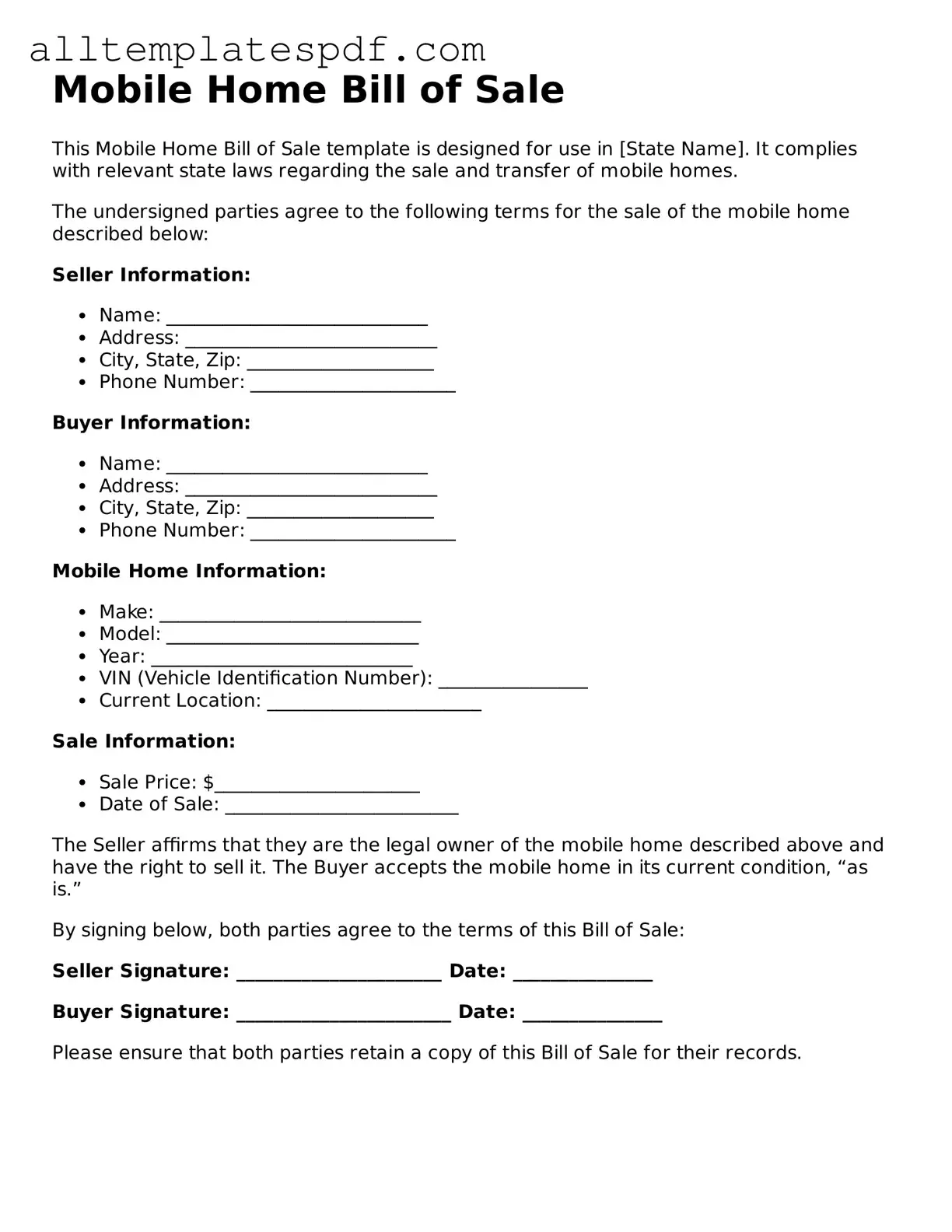Filling out a Mobile Home Bill of Sale form can seem straightforward, but there are common mistakes that many people make. One of the most frequent errors is failing to include all necessary information. Buyers and sellers must provide accurate details about the mobile home, such as the make, model, year, and vehicle identification number (VIN). Omitting any of this information can lead to confusion or disputes later.
Another mistake is not properly identifying the parties involved in the transaction. The form should clearly state the names and addresses of both the seller and the buyer. If this information is incomplete or incorrect, it can create problems when trying to transfer ownership. Always double-check that both parties' details are accurate and clearly presented.
People often overlook the importance of signatures. Both the buyer and the seller must sign the Bill of Sale for it to be legally binding. Some individuals may forget to sign or may not have a witness present, depending on state requirements. This oversight can render the document invalid, complicating the sale.
Not including the sale price is another common error. The form should clearly state the amount paid for the mobile home. Leaving this section blank can lead to disputes about the transaction and may affect tax obligations. Always ensure that the sale price is clearly written and agreed upon by both parties.
Another mistake involves failing to date the document. A Bill of Sale should include the date of the transaction. This information is crucial for record-keeping and can be important if legal issues arise later. Without a date, it may be difficult to establish when the sale occurred.
Some individuals also neglect to review their state’s specific requirements for the Bill of Sale. Each state may have different rules regarding what must be included in the document. It’s essential to understand these requirements to avoid any legal complications. Researching state laws can save time and prevent mistakes.
Finally, people sometimes use vague language in the description of the mobile home. The Bill of Sale should provide a clear and detailed description to avoid any ambiguity. Phrases like “in good condition” can be subjective. Instead, it’s better to specify the condition and any known issues. This clarity helps protect both parties in the transaction.
